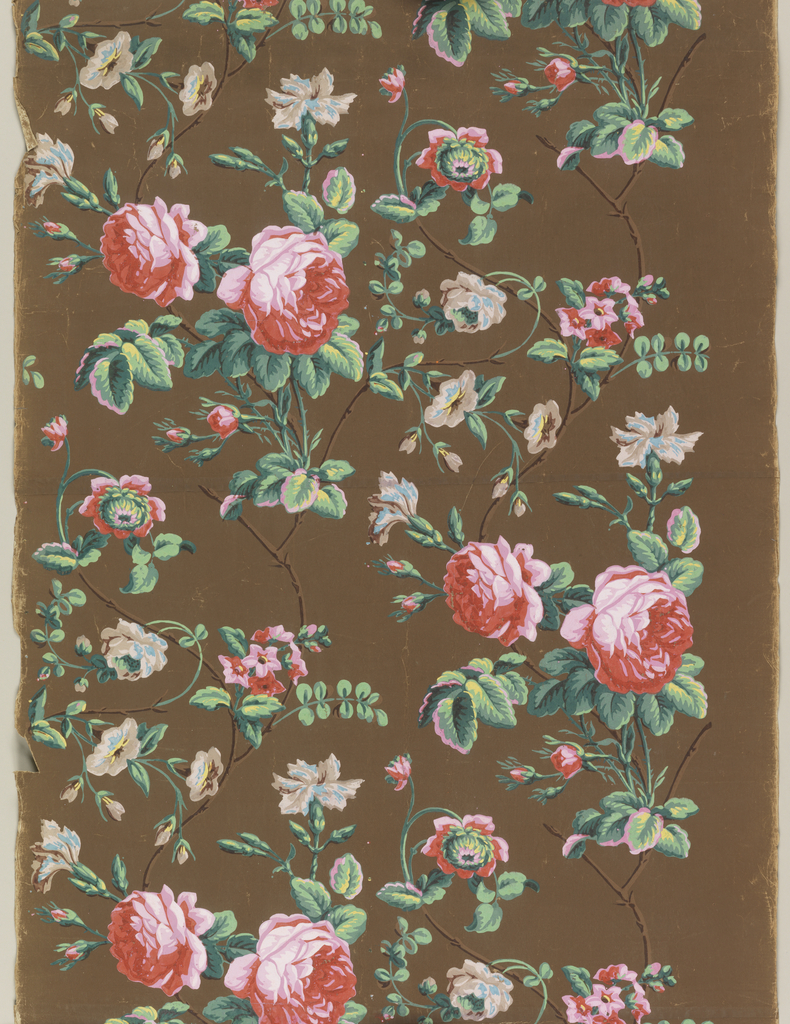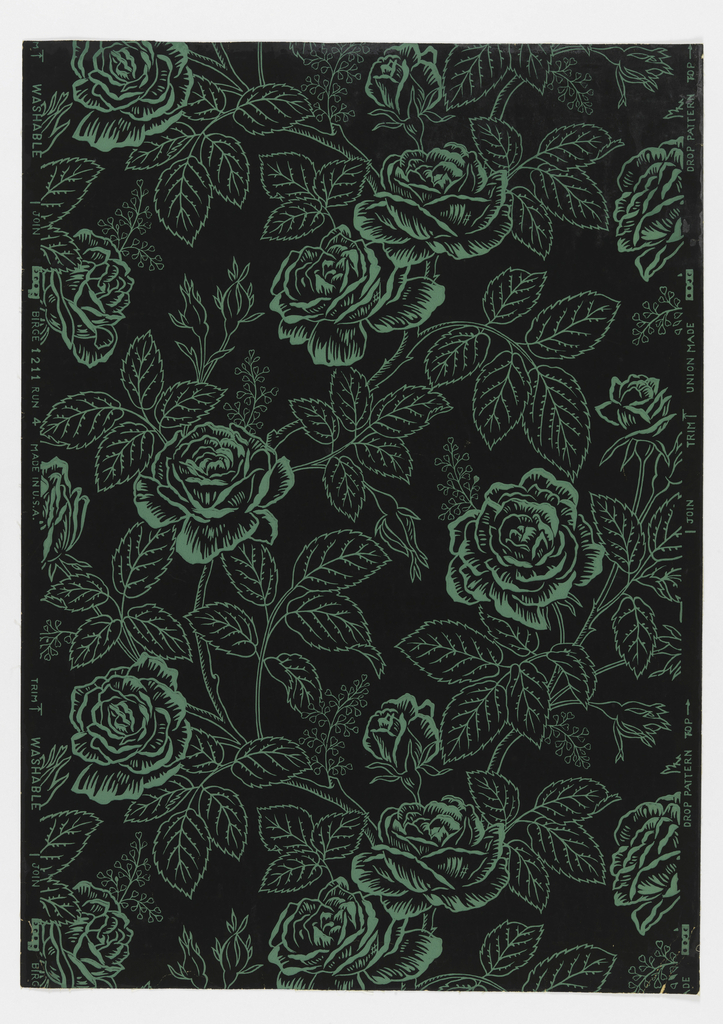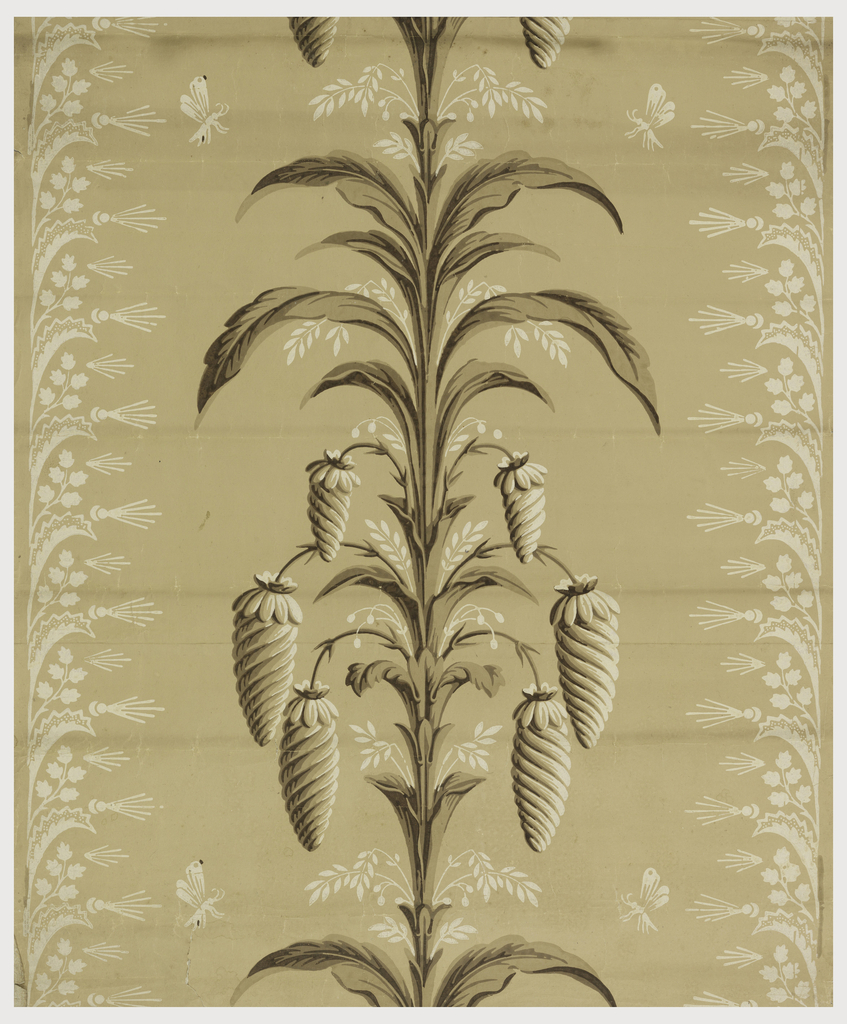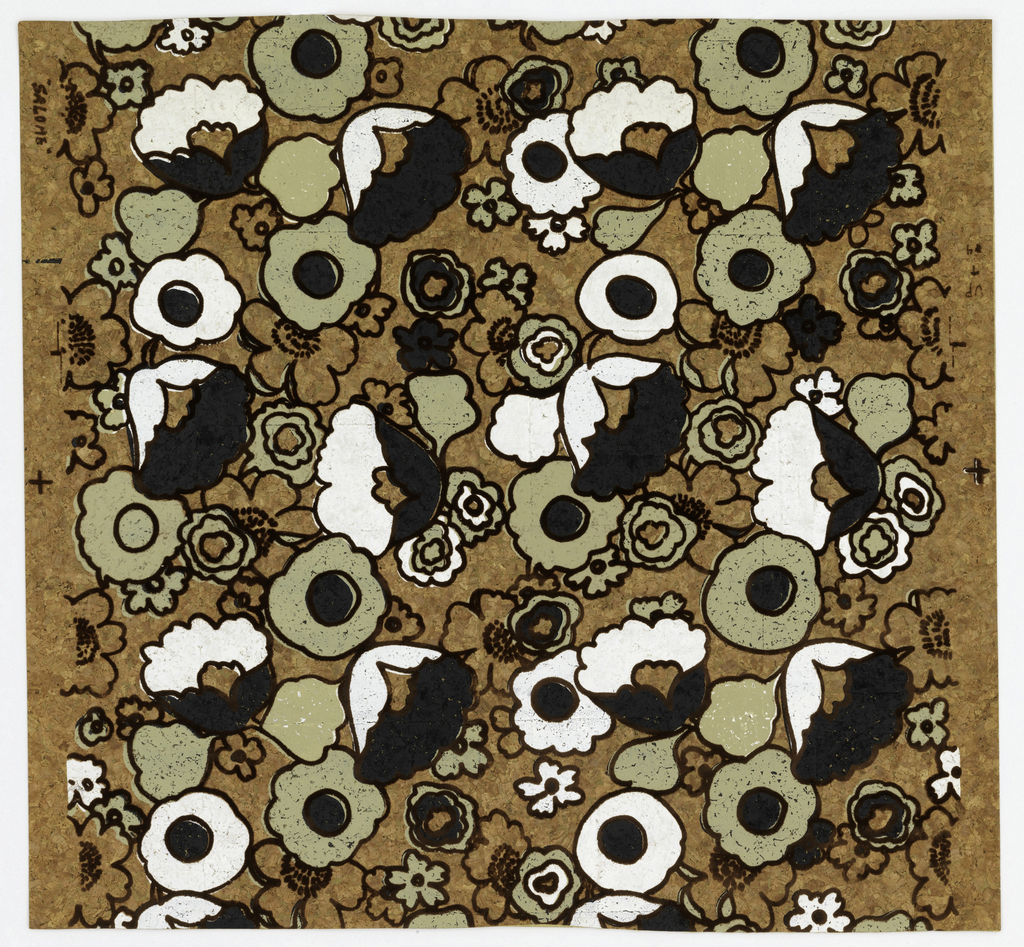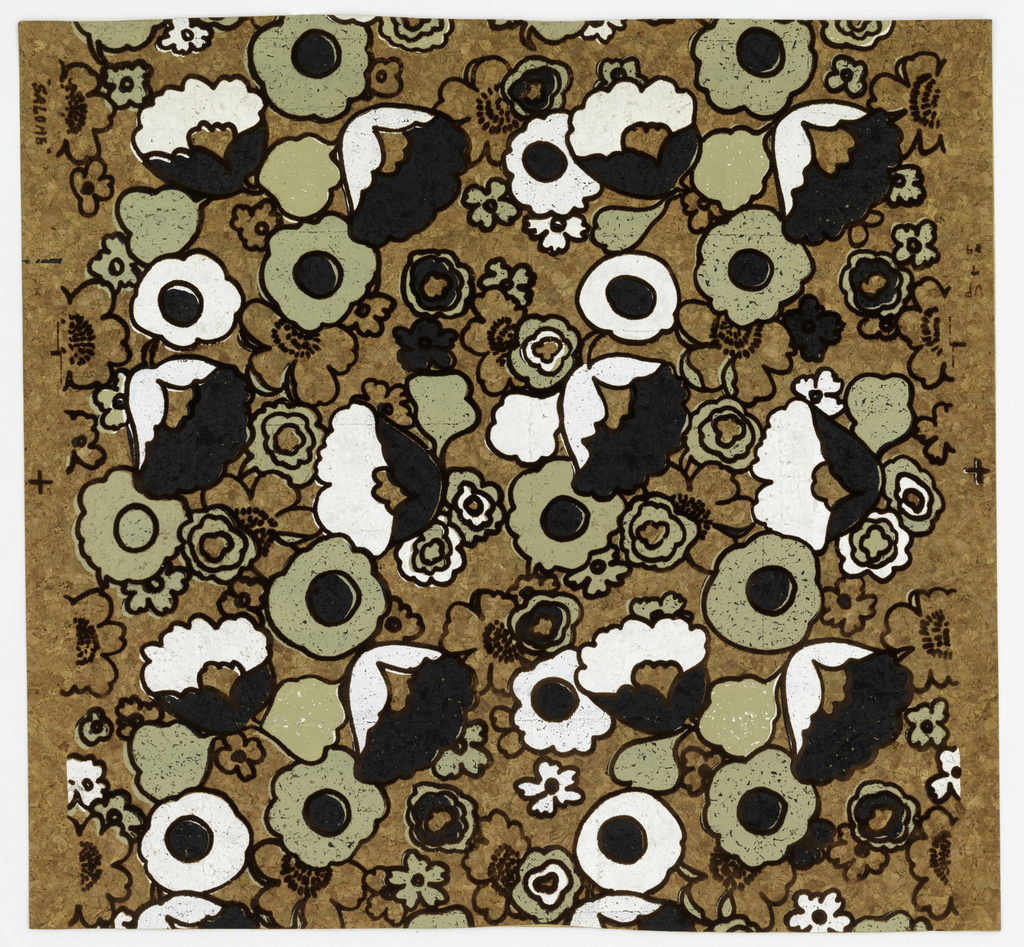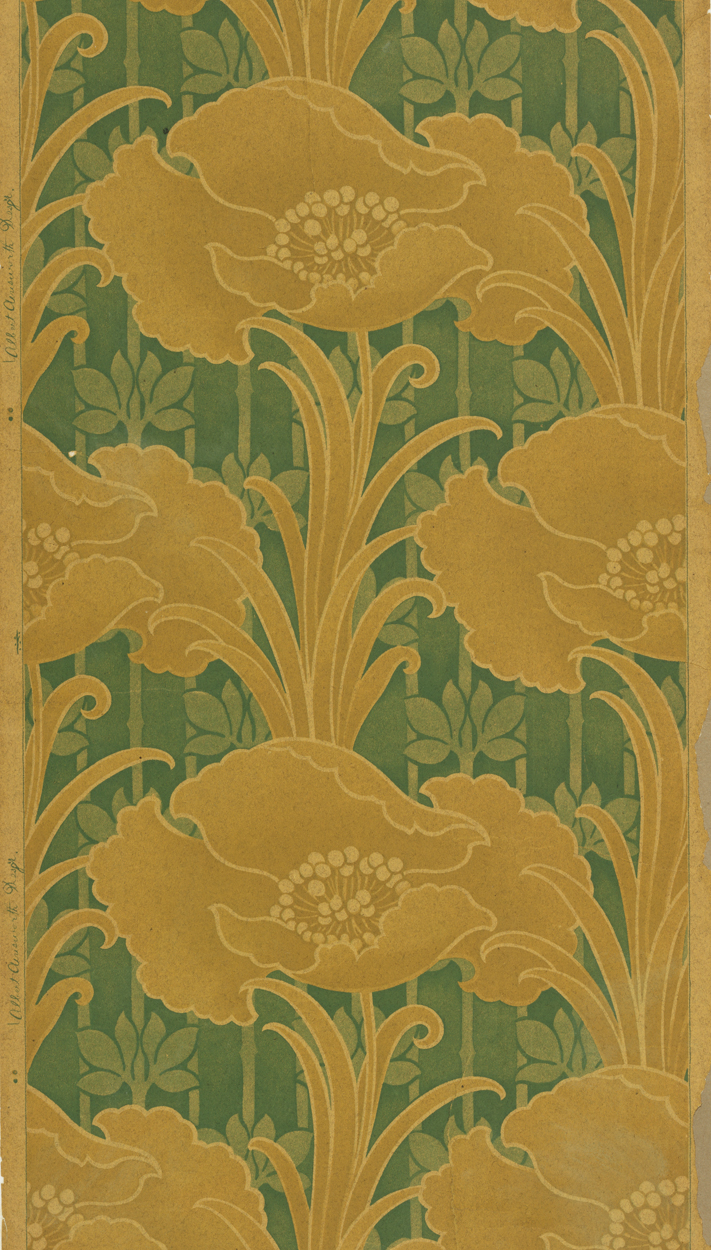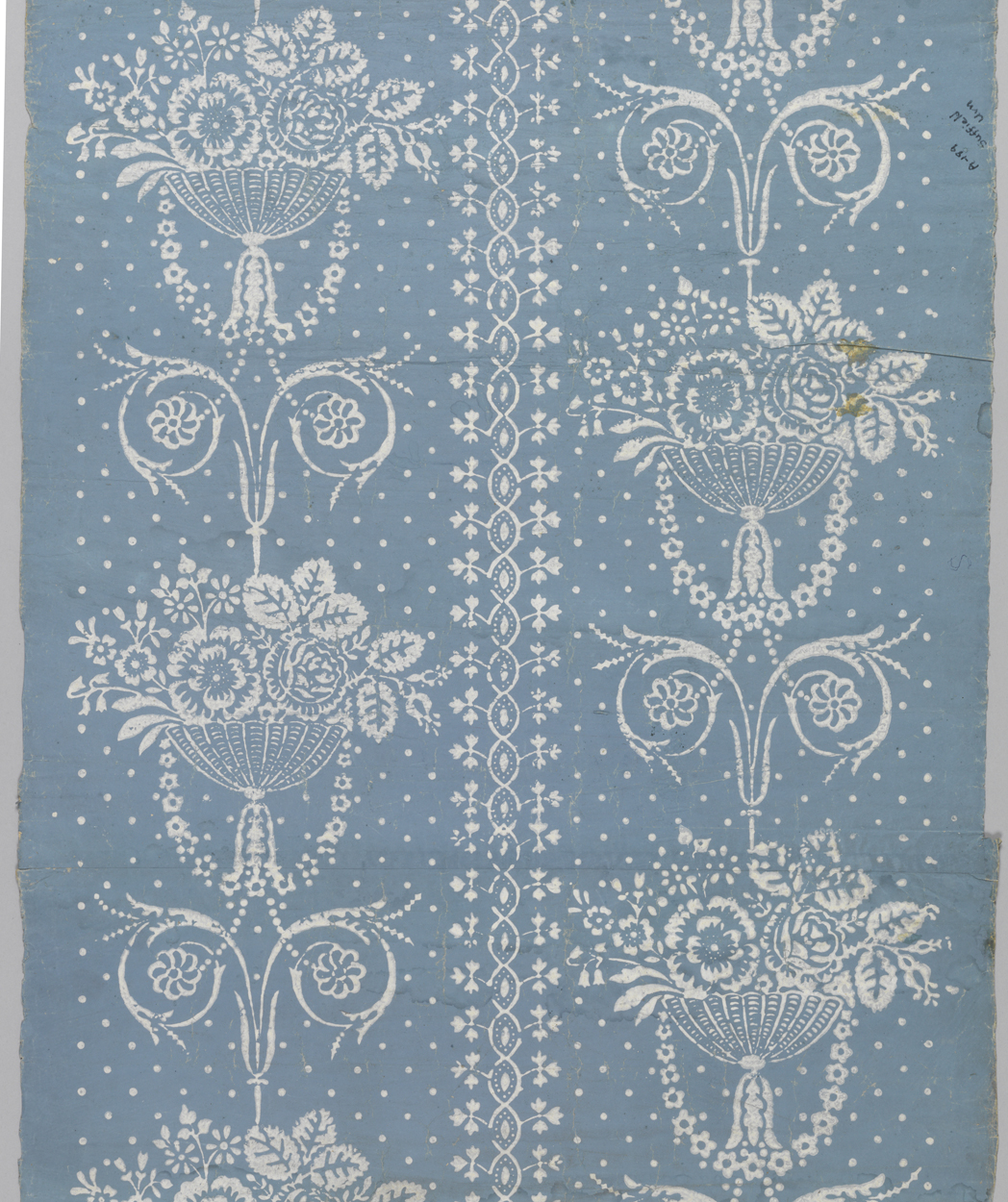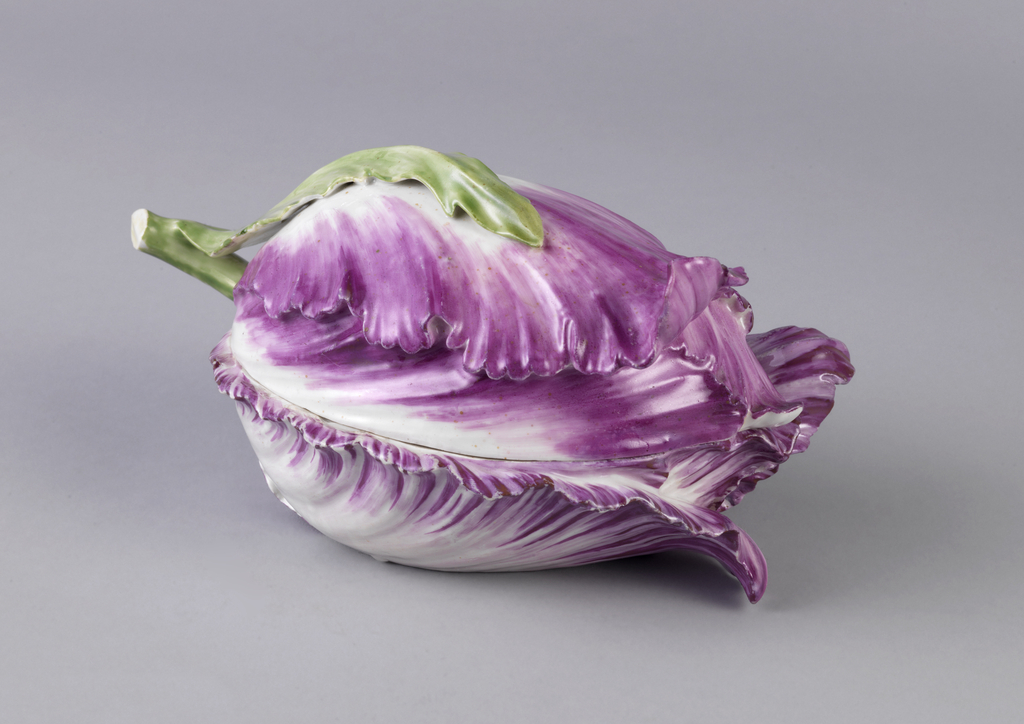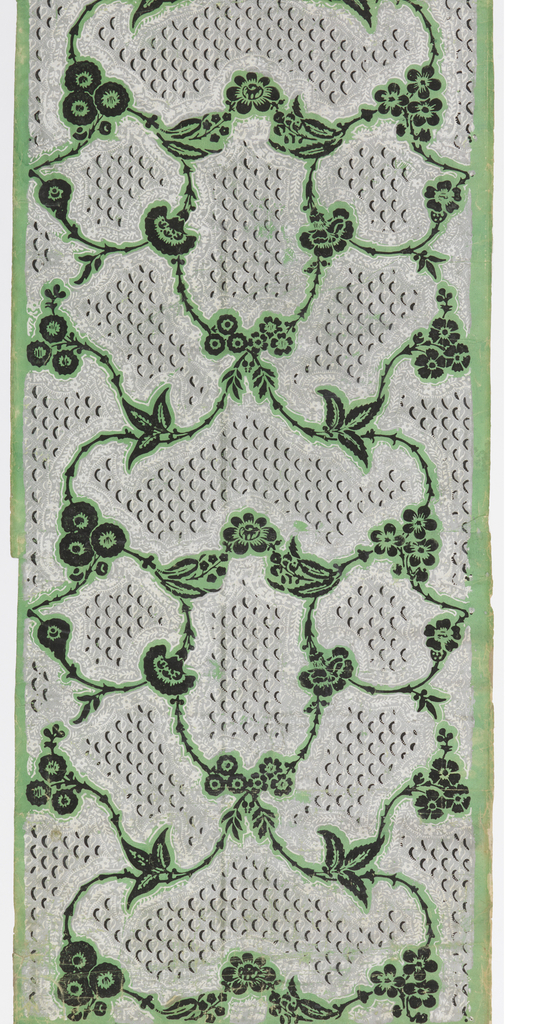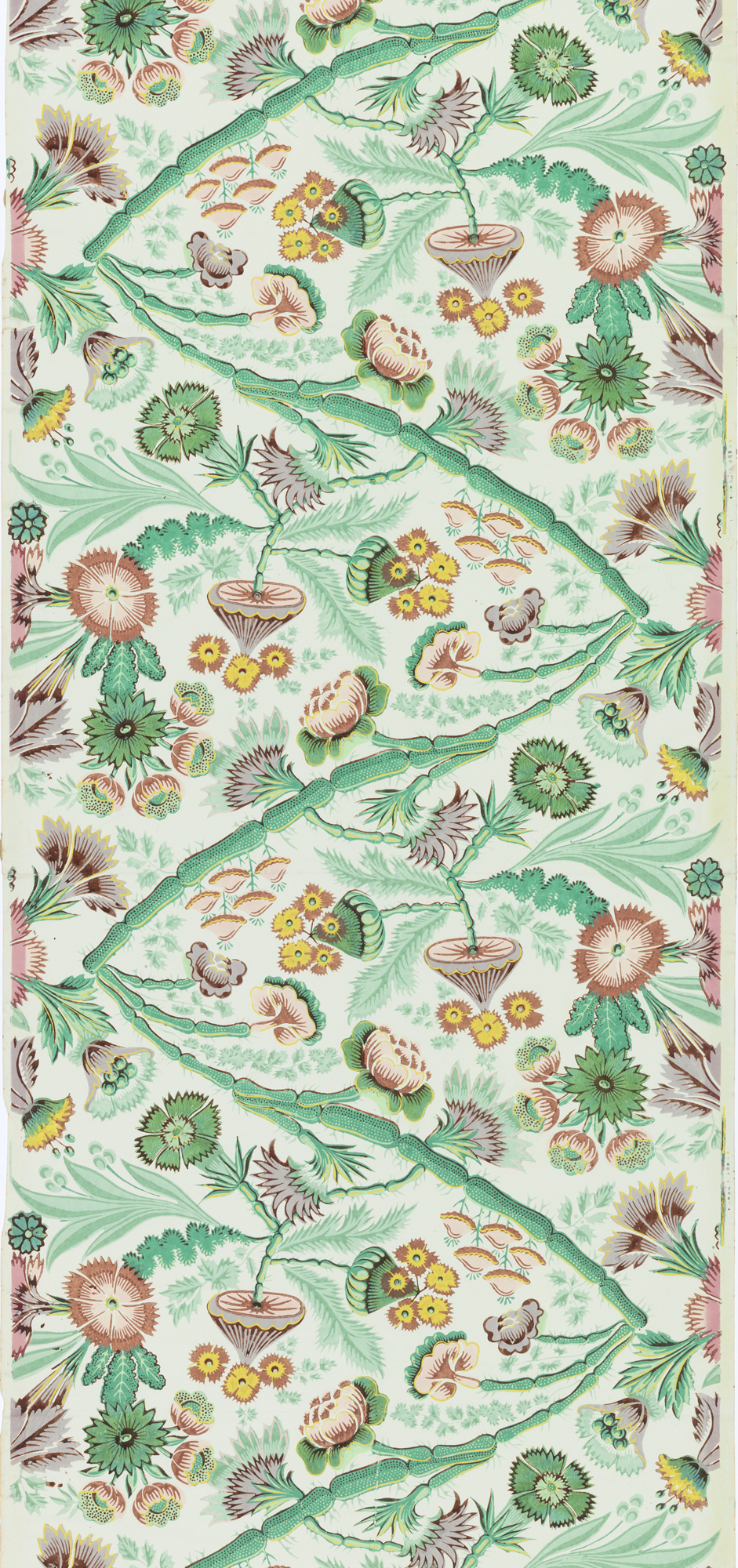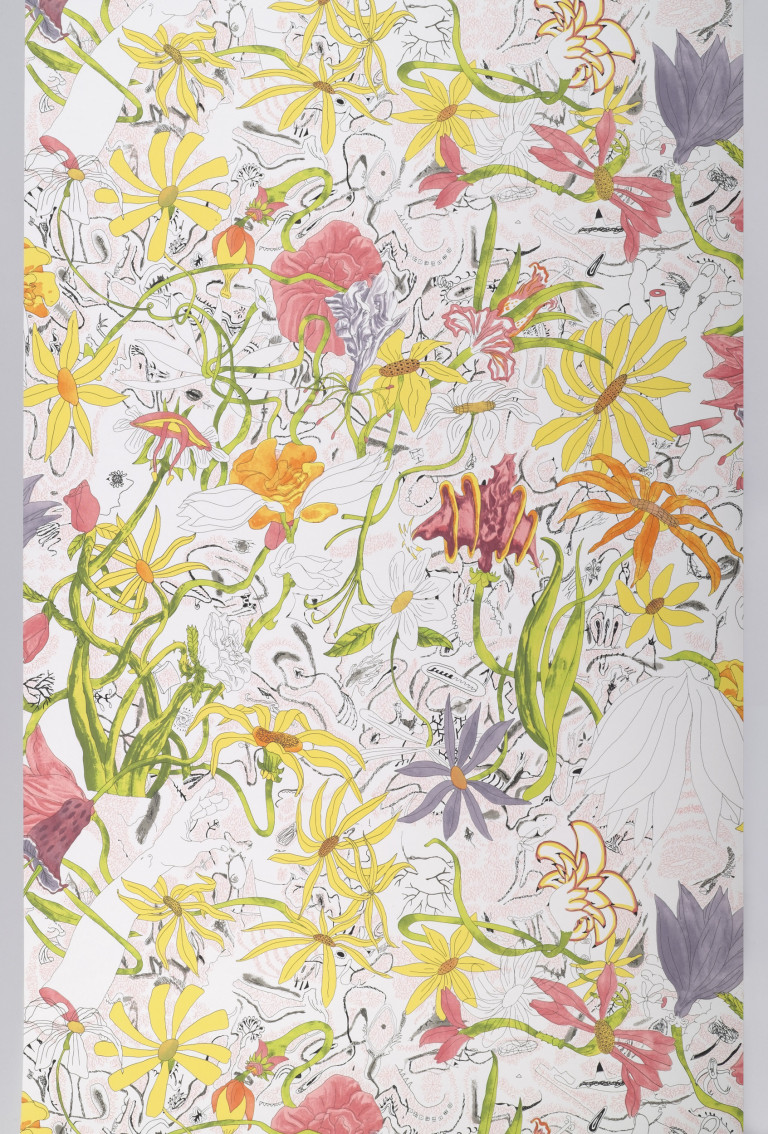Many of the wallcoverings in the Cooper Hewitt’s collection were created by designers better known for their work in the fine arts. This sidewall, c. 1927, was designed by Charles Burchfield, a much-loved American watercolorist. A mint-green trellis embellished with cross-hatching divides the panel into regular diamond-shaped cells. Each cell contains a stencil-like image of...
An early, French-made sidewall reminiscent of the pleasant cliches of a romance in France. A warm, chocolate-colored background sets off lovely, lush pink roses in full bloom. The burgeoning blossoms grow from impossibly delicate vines, profuse with perfect little green leaves livened up by touches of pale pink and yellow. Smaller white blooms flutter about...
Jungle-green, blooming roses are outlined against a jet-black background in this mid twentieth century machine printed wallpaper. The sharp, sure linear style of the images is reminiscent of old wood-cut prints, while the colorway brings to mind the kitschy black velvet paintings that frequently turn up in junk shops and dive bars. Thoughts of amateur...
A highly symmetrical stalk grows confidently up the center of this sidewall panel, which was manufactured in France in the early nineteenth century. Acanthus-like foliage and strange, swirly pods droop heavily downwards, accented by wispy little branches of leaves and un-opened blossoms. Winged insects descend towards the stalk from either side. Presumably their mission is...
Entitled “Salome,” this unusual wallcovering was manufactured c.1967 by Bob Mitchell Designs and the pattern was created by the man himself. The design was much appreciated when it was originally produced, and was featured in a collection of the best of California Design curated by the Pasadena Art Museum in 1968. The pop-art inspired floral...
Entitled “Salome,” this unusual wallcovering was manufactured c.1967 by Bob Mitchell Designs and the pattern was created by the man himself. The design was much appreciated when it was originally produced, and was featured in a collection of the best of California Design curated by the Pasadena Art Museum in 1968. The pop-art inspired floral...
In 1905, the same year that influential architectural theorist Adolf Loos sounded the modernist rallying cry against ornamentation, a small-town New Jersey designer named Albert Ainsworth decided he was going to go ahead and design a highly ornamental, floral wallpaper anyway. Floppy, mustard-yellow poppies grow from spindly fronds of the same color. A muted, green...
Pretty and pleasant, this unassuming wallpaper plays an important role in the scholarship of early American design. In 1821 Adrian Janes and Edwin Bolles opened a wallpaper business (creatively named Janes & Bolles) in the bustling industry town of Hartford Connecticut. In the American Mercury, June 1st 1824, they advertised they had an “extensive assortment...
This tulip-form small tureen or covered dish must have appeared a wonderful bit of nature, as if fallen from a bouquet, on a dining table. Porcelain started to take the place of sugar sculptures on the most elegant tables of Europe in the eighteenth century. It came at a time when nature was being observed...
Wallpaper is a direct descendant of the elaborate tapestries that hung heavy on the walls of the wealthy since ancient times. Therefore, it is only natural that a significant portion of early wallpaper imagery closely correlates to patterns originally developed for textiles. This woodblock-printed paper is of English manufacture, dates to c.1765 and is clearly...
This colorful 18th century English wallpaper was designed in the style of Jean Pillement, the celebrated French illustrator of chinoiserie and some-time royal painter to Marie Antoinette. The repeating pattern of flowers and foliage show Asian motifs as interpreted through a Western lense. In 1755 a folio entitled “A New Book of Chinese Ornaments, Invented...
Flower Bed serves as a parable about good and evil involving furry black and white animate forms and chronicles their struggle against adversity. One of Hancock’s characters, Homerbuctus, has an eye for beauty but knows no moderation. His insatiable appetite leads him to take the flowers as his “mistresses”. Flower Bed wallpaper expresses this abundance...

